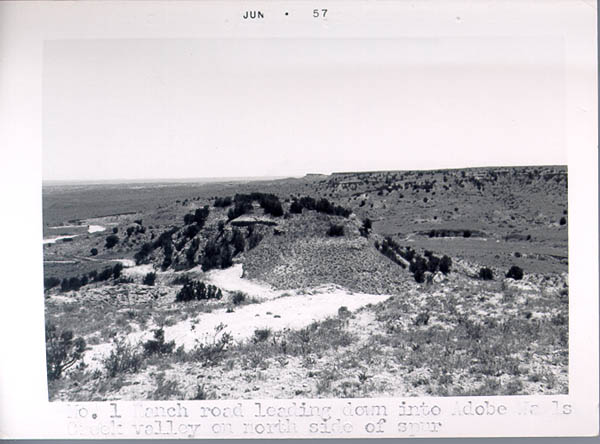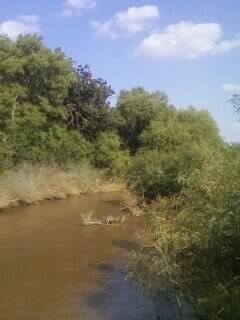|
Kicking Bird
Kicking Bird, also known as Tene-angop'te, "The Kicking Bird", "Eagle Who Strikes with his Talons", or "Striking Eagle" (1835 - May 3, 1875) was a High Chief of the Kiowa in the 1870s. It is said that he was given his name for the way he fought his enemies. He was a Kiowa, though his grandfather had been a Crow captive who was adopted by the Kiowa. His mysterious death at Fort Sill on May 3, 1875, is the subject of much debate and speculation. Though he was a great warrior who participated in and led many battles and raids during the 1860s and 1870s, he is mostly known as an advocate for peace and education in his tribe. He enjoyed close relationships with whites, most notably the Quaker teacher Thomas Battey and Indian Agent James M. Haworth. The close relationships he enjoyed with whites engendered animosity among many of the Kiowas, making him a controversial figure. He would become the most prominent peace chief of the Kiowas, following the lead of a previous head chief, Doha ... [...More Info...] [...Related Items...] OR: [Wikipedia] [Google] [Baidu] |
Fort Sill
Fort Sill is a United States Army post north of Lawton, Oklahoma, about 85 miles (136.8 km) southwest of Oklahoma City. It covers almost . The fort was first built during the Indian Wars. It is designated as a National Historic Landmark and serves as home of the United States Army Field Artillery School as well as the Marine Corps' site for Field Artillery MOS school, United States Army Air Defense Artillery School, the 31st Air Defense Artillery Brigade, and the 75th Field Artillery Brigade. Fort Sill is also one of the four locations for Army Basic Combat Training. It has played a significant role in every major American conflict since 1869.Janda, Lanceof Oklahoma History and Culture''. "Fort Sill."Retrieved 16 December 2013. History The site of Fort Sill was staked out on 8 January 1869, by Maj. Gen. Philip H. Sheridan, who led a campaign into Indian Territory to stop tribes from raiding border settlements in Texas and Kansas. Sheridan's massive winter campaign inv ... [...More Info...] [...Related Items...] OR: [Wikipedia] [Google] [Baidu] |
Kit Carson
Christopher Houston Carson (December 24, 1809 – May 23, 1868) was an American frontiersman. He was a fur trapper, wilderness guide, Indian agent, and U.S. Army officer. He became a frontier legend in his own lifetime by biographies and news articles, and exaggerated versions of his exploits were the subject of dime novels. His understated nature belied confirmed reports of his fearlessness, combat skills, tenacity, and profound effect on the westward expansion of the United States. Although he was famous for much of his life, historians in later years have written that Kit Carson did not like, want, or even fully understand the fame that he experienced during his life. Carson left home in rural Missouri at 16 to become a mountain man and trapper in the West. In the 1830s, he accompanied Ewing Young on an expedition to Mexican California and joined fur-trapping expeditions into the Rocky Mountains. He lived among and married into the Arapaho and Cheyenne tribes. In th ... [...More Info...] [...Related Items...] OR: [Wikipedia] [Google] [Baidu] |
Battle Of Washita
The Battle of Washita River (also called Battle of the Washita or the Washita Massacre) occurred on November 27, 1868, when Lt. Col. George Armstrong Custer's 7th U.S. Cavalry attacked Black Kettle's Southern Cheyenne camp on the Washita River (the present-day Washita Battlefield National Historic Site near Cheyenne, Oklahoma). The Cheyenne camp was the most isolated band of a major winter encampment along the river of numerous Native American tribal bands, totaling thousands of people. Custer's forces attacked the village because scouts had found it by tracking the trail of an Indian party that had raided white settlers. Black Kettle and his people had been at peace and were seeking peace. Custer's soldiers killed women and children in addition to warriors, although they also took many captive to serve as hostages and human shields. The number of Cheyenne killed in the attack has been disputed since the first reports. Background After the Southern Cheyenne and Arapaho signed ... [...More Info...] [...Related Items...] OR: [Wikipedia] [Google] [Baidu] |
Medicine Lodge, Kansas
Medicine Lodge is a city in and the county seat of Barber County, Kansas, United States. As of the 2020 census, the population of the city was 1,781. History 19th century The particular medicine lodge, mystery house or sacred tabernacle from which the Medicine Lodge River received its name was in reality an arbor-like shelter of tree trunks and leafy branches which was erected by the Kiowa people for the celebration of their annual sun dance in the summer of 1866. It was in the valley of the Medicine Lodge River, several miles below the present town of Medicine Lodge, which is at the mouth of Elm Creek. In their own language, the Kiowa people called this stream A-ya-dalda P’a, meaning "Timber-hill River." The Kiowa had considered the site sacred due to the high content of Epsom salts in the river. In October 1867, the Medicine Lodge Treaty was a set of three treaties signed between the United States of America and the Kiowa, Comanche, Plains Apache, Southern Cheyenne, and ... [...More Info...] [...Related Items...] OR: [Wikipedia] [Google] [Baidu] |
Ten Bears
Ten Bears ( Comanche ''Pawʉʉrasʉmʉnurʉ''Anglicized as Parua-wasamen and Parry-wah-say-mer in treaties and older documents.) (ca. 1790-November 23, 1872) was the principal chief of the Yamparika or "Root Eater" division of the Comanche from ca. 1860-72. He was the leader of the Ketahto ("The Barefeet") local group of the Yamparika, probably from the late 1840s. The ethnonym (group name), Yamparika or "Root Eater" Comanche was known to the Spaniards of New Mexico as early as the 1750s, but until about 1790, they were generally north of the Arkansas River and so were seldom specifically mentioned in Spanish documents. After that time, with the advance of Cheyennes (Comanche: ''paka naboo'' 'striped arrows'), and Cuampes, likely Arapahos, some Yamparika local groups, including the Ketahto, relocated to the valley of the North Canadian River in New Mexico and Texas. Early life Ten Bears was orphaned as a baby when his family group was murdered by Lakotas.Attocknie, F. J. ( ... [...More Info...] [...Related Items...] OR: [Wikipedia] [Google] [Baidu] |
Black Kettle
Black Kettle (Cheyenne: Mo'ohtavetoo'o) (c. 1803November 27, 1868) was a prominent leader of the Southern Cheyenne during the American Indian Wars. Born to the ''Northern Só'taeo'o / Só'taétaneo'o'' band of the Northern Cheyenne in the Black Hills of present-day South Dakota, he later married into the ''Wotápio / Wutapai'' band (one mixed Cheyenne-Kiowa band with Lakota Sioux origin) of the Southern Cheyenne. Black Kettle is often remembered as a peacemaker who accepted treaties with the U.S. government to protect his people. On November 27, 1868, while attempting to escape the Battle of Washita River with his wife, he was shot and killed by soldiers of the U.S. 7th Cavalry. Early life Black Kettle was born around 1803 in South Dakota into the Cheyenne Nation. Little is known of Black Kettle's life prior to 1854, when he was made a chief of the Council of Forty-four, the central government of the Cheyenne tribe. The Council met regularly at the Sun Dance gatherings, wh ... [...More Info...] [...Related Items...] OR: [Wikipedia] [Google] [Baidu] |
Fort Dodge, Kansas
Fort Dodge is an unincorporated community in Grandview Township, Ford County, Kansas, United States. As of the 2020 census, the population of the community and nearby areas was 97. It is located on U.S. Route 400 southeast of Dodge City. Fort Dodge has a post office with ZIP code 67843. History From 1865 to 1882, Fort Dodge was an outpost on the Santa Fe Trail. After the fort closed, the site became the Kansas Soldiers' Home in 1890. Demographics For statistical purposes, the United States Census Bureau has defined Fort Dodge as a census-designated place (CDP). 2010 census As of the 2010 United States Census, there were 165 people, 66 households, and 23 families residing in the CDP. The population density was . There were 98 housing units at an average density of . The racial makeup of the CDP was 95.2% White, 1.8% African American, 0.6% American Indian, 0.6% from other races, and 1.8% from two or more races. Hispanics and Latinos of any race were 3.0% of the popul ... [...More Info...] [...Related Items...] OR: [Wikipedia] [Google] [Baidu] |
No Mocassins
No (and variant writings) may refer to one of these articles: English language * ''Yes'' and ''no'' (responses) * A determiner in noun phrases Alphanumeric symbols * No (kana), a letter/syllable in Japanese script * No symbol, displayed 🚫 * Numero sign, a typographic symbol for the word 'number', also represented as "No." or similar variants Geography * Norway (ISO 3166-1 country code NO) ** Norwegian language (ISO 639-1 code "no"), a North Germanic language that is also the official language of Norway ** .no, the internet ccTLD for Norway * Lake No, in South Sudan * No, Denmark, village in Denmark * Nō, Niigata, a former town in Japan * No Creek (other) * Acronym for the U.S. city of New Orleans, Louisiana or its professional sports teams ** New Orleans Saints of the National Football League ** New Orleans Pelicans of the National Basketball Association Arts and entertainment Film and television * ''Dr. No'' (film), a 1962 ''James Bond'' film ** Jul ... [...More Info...] [...Related Items...] OR: [Wikipedia] [Google] [Baidu] |
Lone Wolf The Elder
Guipago (Gui-pah-gho, or ''Lone Wolf he Elder' '' Alone among the Wolves '') (c. 1820 – July 1879) was the last Principal Chief of the Kiowa tribe. He was a member of the Koitsenko, the Kiowa warrior elite, and was a signer of the Little Arkansas Treaty in 1865. Background The Kiowa flourished as nomadic hunters in the early 19th Century. In 1807, they allied with the Comanche in a treaty drawn up by the Spanish Americans at Las Vegas, NM. In 1863 Lone Wolf (Guipago), accompanied Yellow Wolf, Yellow Buffalo, Little Heart, and White Face Buffalo Calf; two Kiowa women Coy and Etla; and the Indian agent, Samuel G. Colley, to Washington D. C. to establish a policy that would favor the Kiowa, but it was a futile attempt. In the Little Arkansas Treaty of 1865 Dohasan the last Chief of the unified Kiowa signed the peace treaty along with Guipago (Lone Wolf) and other chiefs. Dohasan scorned the peace policy because he knew there would be no more buffalo in Kiowa hunting grounds an ... [...More Info...] [...Related Items...] OR: [Wikipedia] [Google] [Baidu] |
Satanta (White Bear)
Satanta (IPA: eˈtʰæntə (Set'tainte ( éʔ.tˀã́j.dè or ''White Bear'') (ca. 1820 – October 11, 1878) was a Kiowa war chief. He was a member of the Kiowa tribe, born around 1820, during the height of the power of the Plains Tribes, probably along the Canadian River in the traditional winter camp grounds of his people. One of the best known, and last, of the Kiowa War Chiefs, he developed a reputation as an outstanding warrior and in his twenties was made a sub-chief of his tribe, under Dohäsan, as Chief. He fought with him at the First Battle of Adobe Walls, and earned enduring fame for his use of an army bugle to confuse the troops in battle. Satanta was born the son of Chief Red Tipi and a Spanish captive and spent his youth south of the Arkansas River enjoying the peaceful alliance between the Kiowa and Comanche tribes. Orator and warrior One of best known leaders of his tribe in the 1860s–1870s, Satanta was well known for both his prowess as a warrior, and h ... [...More Info...] [...Related Items...] OR: [Wikipedia] [Google] [Baidu] |
Treaty Of Medicine Lodge
The Medicine Lodge Treaty is the overall name for three treaties signed near Medicine Lodge, Kansas, between the Federal government of the United States and southern Plains Indian tribes in October 1867, intended to bring peace to the area by relocating the Native Americans to reservations in Indian Territory and away from European-American settlement. The treaty was negotiated after investigation by the Indian Peace Commission, which in its final report in 1868 concluded that the wars had been preventable. They determined that the United States government and its representatives, including the United States Congress, had contributed to the warfare on the Great Plains by failing to fulfill their legal obligations and to treat the Native Americans with honesty. The U.S. government and tribal chiefs met at a place traditional for Native American ceremonies, at their request. The first treaty was signed October 21, 1867, with the Kiowa and Comanche tribes."Treaty with the Kiow ... [...More Info...] [...Related Items...] OR: [Wikipedia] [Google] [Baidu] |






